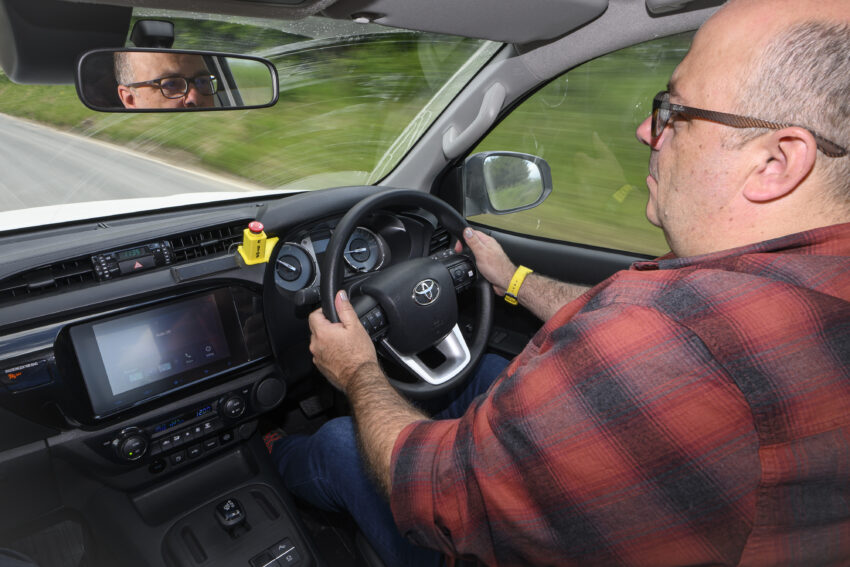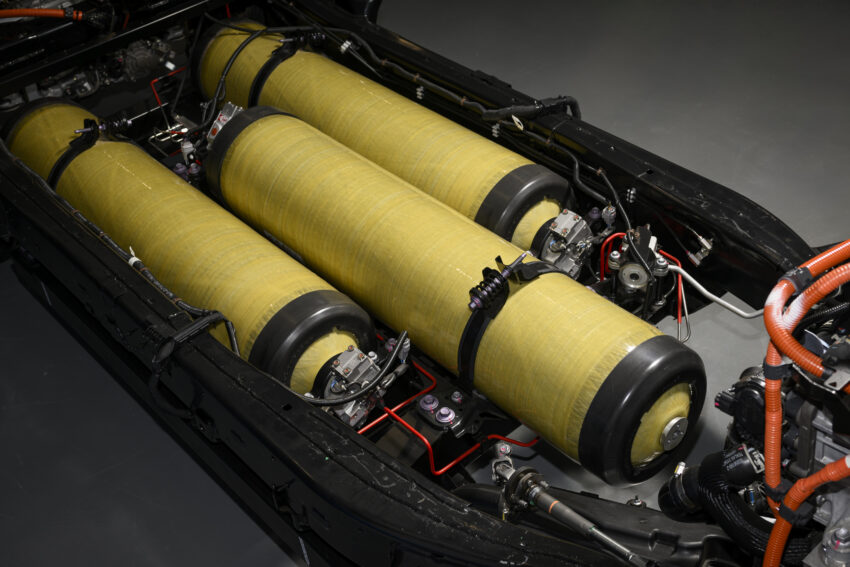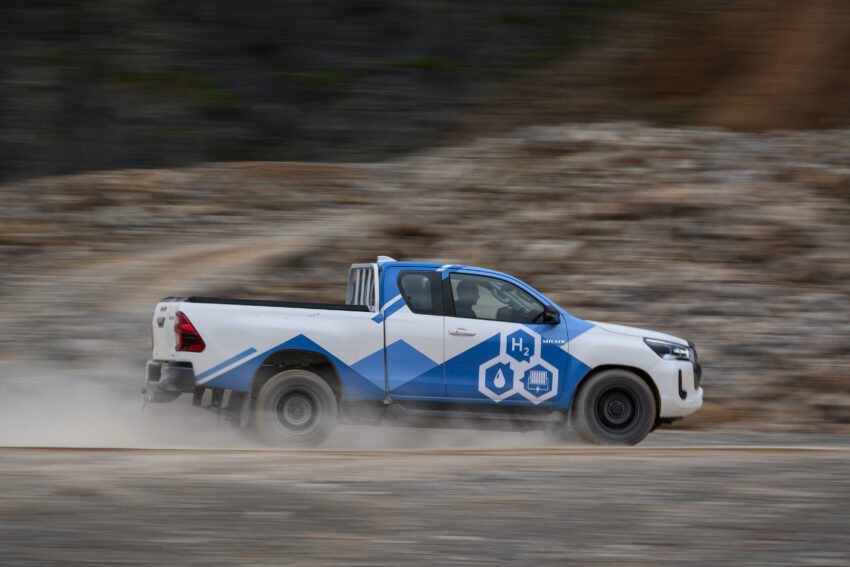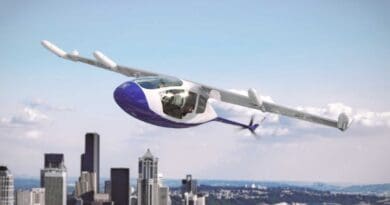Toyota Hilux FCEV prototype drive
With electric pick-ups proving tricky to perfect, does hydrogen hold the key to zero-emissions utility?
Making an electric pick-up sounds like an easy win. Secure some batteries between the chunky chassis rails and replace a heavy oil-burning engine with electric motors at the front and rear. Technically, it’s a piece of cake, yet only Maxus has come to market with an electric pick-up, the T90EV, and that is, to be kind, compromised.While the likes of Isuzu, Ford and Toyota are all working on EV pick-ups, they’re not in any rush, as the specific needs of trucks mean electricity isn’t always the right power source. I know this, as I’m standing in JCB’s quarry on the edge of the Peak district, and there aren’t any charging points here. With many vehicles not registered for the road, popping out and charging up isn’t an option, and installing chargers would take an investment of around £50 million, I’m told, and include burying a 47-mile long cable.That’s why I’ve got the keys to a hydrogen-fuelled Toyota Hilux FCEV prototype. Instead of a battery pack, three hydrogen tanks are integrated into the chassis, and a fuel cell under the bonnet converts hydrogen into electricity. The electricity is stored in a small battery pack mounted in the load box, which drives a motor on the back axle.It’s taken a couple of years of work to get to a working state, a project made easier by Toyota having easy access to the Mirai hydrogen car. Much of the tech in the Hilux has been lifted straight from the Mirai and installed in the pick-up, but there have been some significant problems to resolve; crash structures, ground clearance, cooling and myriad other mundane but utterly essential issues showed themselves during development but the team at Burnaston — yes, this is a UK-led project — are confident that it’s all working now.
Design, interior and technology
Stepping Inside the extended cab Hilux, it’s much like any other extended cab Hilux. The small rear doors swing open to reveal a bench seat that can take a couple of people on short journeys, while the front is as conventional as it’s ever been, although the gear lever has been replaced by a tiny drive mode selector from the Mirai and the rev counter now shows a battery gauge. There’s also the very conspicuous bright red emergency stop button on the dashboard to remind you that this is one of just seven prototypes. With a budget of £11.3m, each one is worth around £1.6m.
Battery, motor and performance
By swapping out the 201bhp diesel engine for the fuel cell from the Mirai, power drops to 180bhp, while torque drops from 369lb ft to 221lb ft. The beauty of electric power is that the torque curve is more of a flat line, so it doesn’t feel underpowered. I took a 2.8-litre diesel model into the quarry beforehand just to check.Making my way onto the hastily laid out circuit — this is a working quarry, so we don’t have free reign to go where we like — the first thing you notice is the lack of noise. It’s easy to become blasé about quiet battery electric cars, but it feels incongruous in a chunky pick-up, at least for the first few metres.I’m told there’s a strict speed limit in the quarry, down to as low as 10mph in places, but nobody seems to be enforcing that. The road surface keeps speeds low anyway, with some very rough sections revealing that, frankly, there’s little to tell between the ride quality of the diesel and hydrogen-fuelled models.More impressively, there’s little difference in performance. Tackling a long, although not worryingly steep, gravel climb was no issue for the Hydrogen Hilux, dispatching the hill with no fuss and only a little squirming from the back of the vehicle when too much power was applied. Discretion got the better of me for the most part, and I resisted recreating Colin McRae’s finest moments for the most part, but rear-wheel drive and a complete lack of traction or stability control were too much to resist on occasion.

But the takeaway is that, for low-speed work, this British-built Hilux is more than capable of performing all day, running for more than 370 miles on a single hydrogen fill-up. That could see the truck running for an entire week.
Payload and practicality
Toyota knows it has work to do here. The battery pack is currently mounted in the cargo box, reducing payload volume, but the manufacturer will eventually ensure it’s hidden somewhere more suitable.There’s also a lot of weight to be saved. The hydrogen tanks, for example, are currently in a custom-made heavy steel frame bolted to the truck, but these will be integrated more neatly in the future.How much weight can be saved? They don’t know yet, but it’s already lighter than the battery-electric pick-up Toyota is developing, so payloads might not be too far from the current vehicles, but it’s too early to tell where we’ll end up.It’ll also have to figure out how to drive all four wheels. While it didn’t struggle on the quarry’s gravel-covered tracks, it might be different on a forest track after heavy rain.
Price and specification
We’re still years from the Hilux FCEV making it to market, and we suspect it’ll appear soon after the all-new Hilux that we expect in 2027, so let’s say 2028.And it won’t be cheap. The Mirai car costs £60,000 and loses Toyota a shed load of money on each one, but converting the Hilux will be a cheaper, easier prospect. Toyota also wants to find homes for several thousand a year in Europe alone, so it’ll have to be competitive.
Verdict
This feels more than just a rapidly thrown-together project. It’s the start of a serious attempt to make commercial vehicles emissions-free. The technology works and suits the vehicle, and Toyota reckons it can build enough of them to make it financially viable. The only stumbling block is the refuelling infrastructure, but that’s going to be easier to resolve than laying 47 miles of cable across the Peak District.






